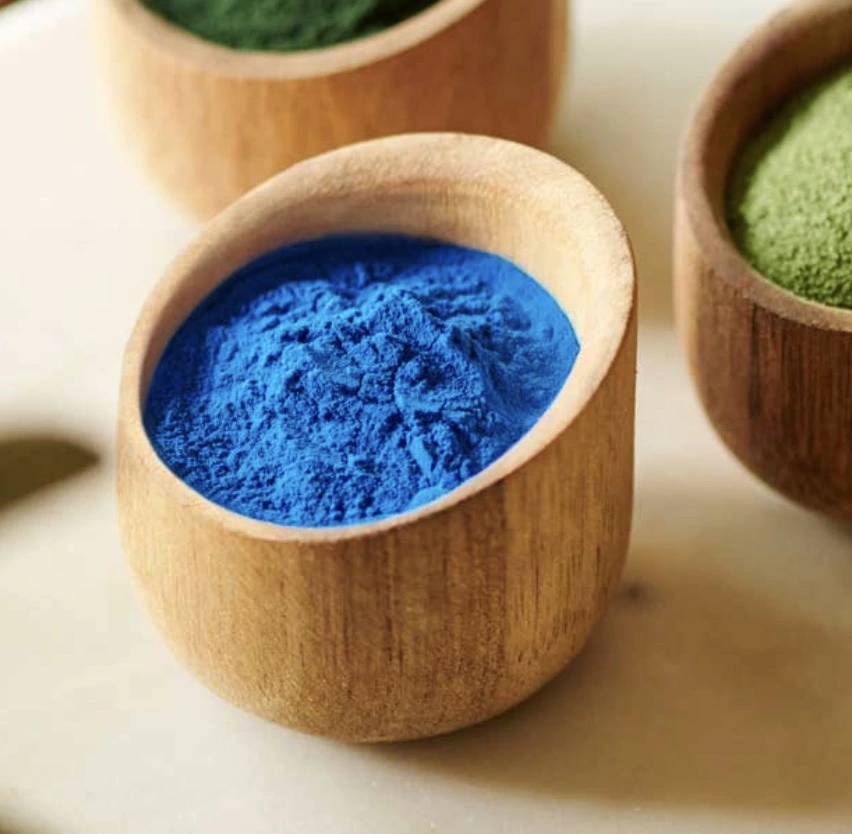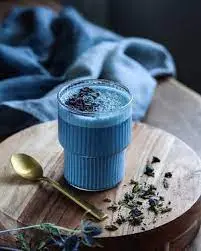The Benefits of E163 Purple Sweet Potato Pigment in Cosmetics
In the ever-evolving world of cosmetics, natural ingredients are taking center stage. One such ingredient that's been making waves is E163, a pigment derived from purple sweet potatoes. This vibrant, plant-based colorant is not only visually appealing but also packed with potential skincare benefits. Let's delve into the world of purple sweet potato red pigment E163 and discover why it's becoming a favorite in the beauty industry.

How E163 Pigment Enhances Skincare Products?
E163, also known as anthocyanin, is the natural pigment responsible for the deep purple hue of certain sweet potatoes. But its role extends far beyond just adding color to cosmetics. This powerful compound boasts a range of properties that can significantly enhance skincare formulations.
Antioxidant Powerhouse
One of the most notable benefits of E163 is its potent antioxidant properties. Antioxidants are crucial in skincare as they help neutralize free radicals, which are unstable molecules that can damage skin cells and accelerate aging. By incorporating E163 into skincare products, formulators can create potent anti-aging solutions that help protect the skin from environmental stressors.
Natural Coloration
As consumers become more conscious of synthetic dyes, purple sweet potato red pigment E163 provides a natural alternative for coloring cosmetic products. Its vibrant purple shade can be used to create beautiful hues in a variety of beauty items, including lipsticks and eye shadows, offering a safe and natural option. This allows brands to meet growing demand for clean, plant-based ingredients, while delivering eye-catching colors without relying on artificial colorants.
Skin-Soothing Properties
Research suggests that anthocyanins, like those found in E163, may have anti-inflammatory properties. This makes E163 a valuable ingredient in products designed to soothe sensitive or irritated skin. Whether it's a calming face mask or a gentle moisturizer, E163 can contribute to formulations that help reduce redness and promote a more even skin tone.

Natural Beauty: Why E163 is Trending in Cosmetics?
The rise of E163 in cosmetics is part of a broader trend towards natural, plant-based ingredients in beauty products. This shift is driven by several factors that align perfectly with what E163 has to offer.
Clean Beauty Movement
Consumers are becoming more discerning about ingredient lists, favoring products with familiar, natural components. E163, sourced from purple sweet potatoes, aligns perfectly with the "clean beauty" movement. It provides a transparent, plant-based alternative to synthetic colorants, appealing to those who prioritize cleaner, more natural beauty options. This natural pigment offers an eco-friendly solution that meets the demand for products that are both effective and aligned with a sustainable, ingredient-conscious approach.
Multifunctional Ingredients
Modern consumers value ingredients with multiple benefits. Purple sweet potato red pigment E163 not only adds color but also offers potential skincare advantages. This multifunctional quality makes it an appealing choice for cosmetic formulators who aim to create products that enhance both appearance and skin health. By combining aesthetic appeal with nourishing and protective properties, E163 helps meet the demand for cosmetics that provide both beauty and skincare benefits in one formula.
Sustainability and Eco-Friendliness
As the beauty industry embraces sustainability, ingredients like E163 are becoming increasingly popular. Sourced from the renewable purple sweet potato, E163 resonates with eco-conscious consumers. Additionally, the cultivation of purple sweet potatoes for E163 extraction supports sustainable agricultural practices, promoting environmental responsibility. This aligns with the growing demand for eco-friendly beauty solutions, making E163 an ideal choice for brands looking to meet both consumer preferences and sustainability goals.

Is E163 Safe for Sensitive Skin? Key Insights
With any cosmetic ingredient, safety is paramount, especially for those with sensitive skin. Let's explore what makes E163 a potentially suitable option for various skin types.
Gentle Plant-Based Origin
Being derived from purple sweet potatoes, E163 is inherently gentle and less likely to cause irritation compared to some synthetic alternatives. This natural origin makes it a promising option for those with sensitive skin who may react to artificial colorants or preservatives.
Hypoallergenic Potential
While individual reactions can vary, purple sweet potato red pigment E163 is generally considered to have low allergenic potential. However, as with any new skincare ingredient, it's always recommended to perform a patch test before full application, especially for those with known sensitivities.
Soothing Properties
The potential anti-inflammatory properties of E163 may actually benefit sensitive skin types. Products containing this ingredient might help calm irritation and reduce redness, making them suitable for those with reactive skin conditions.
Considerations for Use
While E163 shows promise for sensitive skin, it's important to note that the overall formulation of a product matters. Even with gentle ingredients like E163, other components in a cosmetic product could potentially cause reactions. Always check the full ingredient list and consult with a dermatologist if you have specific skin concerns.

Conclusion
In conclusion, E163 purple sweet potato pigment is proving to be a versatile and beneficial ingredient in the world of cosmetics. From its antioxidant properties to its natural coloration and potential skin-soothing effects, E163 offers a range of benefits that align with current trends in natural and effective skincare. As the beauty industry continues to evolve, ingredients like E163 demonstrate how nature can provide solutions that are both visually appealing and beneficial for our skin.
For more information about purple sweet potato red pigment E163 and other natural plant extracts for cosmetics and skincare, feel free to contact us at info@yanggebiotech.com. Our team of experts is always ready to help you explore innovative, high-quality raw material solutions for your beauty products.
References
1. Johnson, A. et al. (2022). "Anthocyanins from Purple Sweet Potato: Extraction, Characterization, and Potential Applications in Cosmetics." Journal of Agricultural and Food Chemistry.
2. Smith, L. and Brown, K. (2021). "Natural Pigments in Skincare: A Review of Efficacy and Safety." International Journal of Cosmetic Science.
3. Zhang, Y. et al. (2023). "Antioxidant and Anti-inflammatory Properties of E163 in Topical Applications: A Comprehensive Review." Phytotherapy Research.
4. Davis, R. and Wilson, T. (2022). "Consumer Perceptions and Preferences for Natural Ingredients in Beauty Products: A Global Survey." Journal of Cosmetic Dermatology.
5. Lee, H. et al. (2023). "Sustainable Sourcing and Production of Plant-Based Cosmetic Ingredients: Case Study on Purple Sweet Potato Pigments." Sustainability.

Based on your location and order quantity, you will have the opportunity to receive a limited time free shipping promotion!

Who we are


